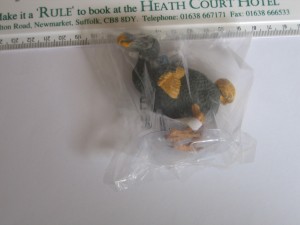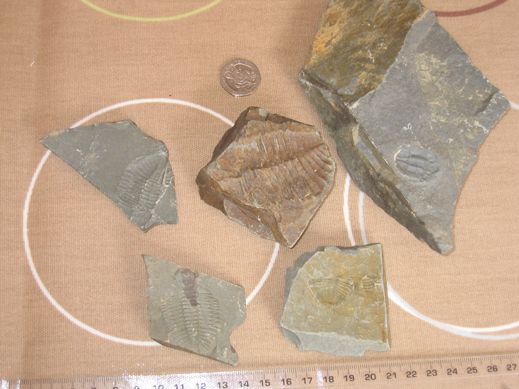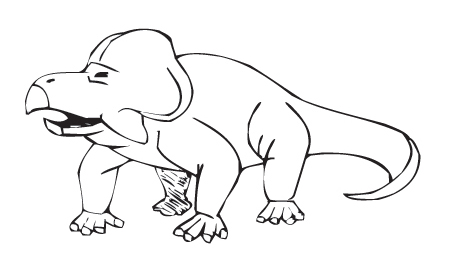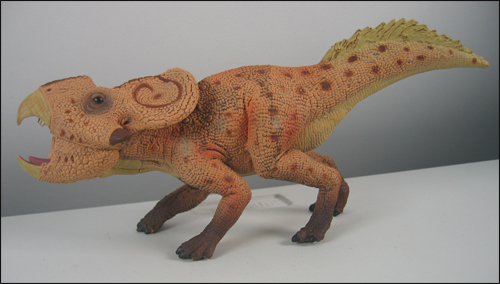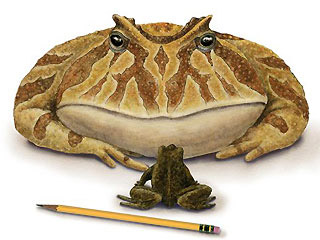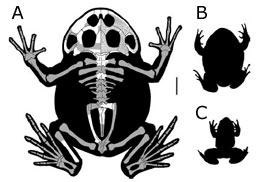Stunning and Rare Dinosaur Tracks Close to Washington D.C.
Plans to display Dinosaur Trackways in Washington D.C.
When asked to comment on dinosaur discoveries in the United States most experts may cite discoveries in the Badlands of Montana or the Cleveland-Lloyd Dinosaur quarry in Utah. Certainly, it is true to say that they are many fantastic Mesozoic fossil sites in the west of the USA but the eastern part of the United States, although perhaps a little under-represented in terms of fossil evidence, can still spring a few surprises.
Dinosaur Tracks
Now a new study of fossil trackways in Maryland, north-eastern USA has provided a glimpse into a thriving dinosaur based eco-system. Many of the trackways, have been found just a few miles drive out of Washington D.C. Trackways and footprints are called trace fossils. Trace fossils preserve evidence of the activity of animals such as their trackways, borings or burrows. The problem with most sets of footprints, even the very best preserved ones, is that, unless the animal is found fossilised at the end of the trackway, scientists can never be 100% certain as to the species or genus that actually left the prints.
Trace fossils such as footprints do have a significant advantage over other types of fossil such as fossil bones, most are direct in situ evidence of the environment at the time and place the organism was living.
Studying Trace Fossils
A total of over 900 fossilised footprints from a variety of dinosaurs all dated from the Cretaceous have been identified from the area. Theropods, ankylosaurs (Nodosauridae), sauropods and ornithopods are represented by the prints. Palaeontologists have estimated that the trackways were made between 121 and 98 million years ago.
Trace fossils of other animals have also been preserved in the this part of the USA, one trackway has been identified as a flying reptile, perhaps a pterosaur flew down to get a drink and its trail was preserved in the soft sediment. Mammal tracks have also been found, indeed one trackway indicates that some mammals were quite large, tracks of a quadrupedal mammal about the size of a large dog have been recorded.
Visit the Everything Dinosaur website: Everything Dinosaur.
Two Dozen Species of Dinosaur
“Based on the trace fossils, over two dozen species of dinosaurs were living in Maryland at that time,” co-author of the study, Ray Stanford commented. Ray specialises in studying fossil trackways, he began to discover tracks in the area whilst out looking for native Indian artifacts, in the stream-beds that criss cross the area.
He explained that as water and human development erode such beds, “floats” can result. These are pieces of track-bearing substrate that hydrodynamically dislodge from their natural stratigraphic context during stream bank flooding.
“This is one instance where building booms and storms can benefit science,” he said.
All of the discoveries were made either in Prince George’s county, near the capital, Washington D.C. or at the White Marsh Run area of Baltimore county.
An Illustration of the Track Made by an Ornithopod Dinosaur
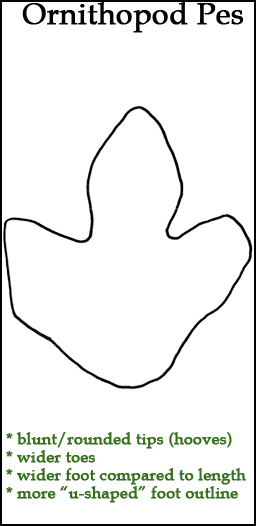
Picture credit: Everything Dinosaur
Photographs show a number of footprint specimens, the peculiar, almost flower-shaped five-toed print in the foreground was most probably made by a nodosaur. Nodosaurs are members of the Ankylosauria, heavily built, slow-moving, plant-eaters with body armour and horns.
To read an early article about dinosaur tracks discovered on the North Yorkshire coast: Dinosaur Tracks Found by Young Boy.
Ray Stanford in conjunction with a Johns Hopkins University palaeontologist called Davide Weishampel hope to publish a journal paper on this new genus of nodosaur. The nodosaur print in the foreground is much smaller than the cast print in the very centre of the image (the print which the model nodosaur is facing), this indicates that some of the trackways may have been made by young, immature animals. This area may have provided a Cretaceous nursery for many species, a popular nesting and breeding ground for a variety of dinosaurs.
Providing an Insight into Dinosaur Behaviour
The scientists state that they may even have uncovered trackway evidence showing youngsters following adults, a possible insight into animal’s behavioural and social relationships.
So far, Stanford has described and published Maryland’s first dinosaur track species (called an ichnospecies which translates to ‘trace species’). It consists of both front and back footprints of a hypsilophodontid dinosaur. He named the new dinosaur footprint type or species Hypsiloichnus marylandicus, meaning “trace of a hypsilophodontid dinosaur from Maryland.”
An overview of these, and other, finds was recently published in the journal Ichnos.
Analysis of the region’s geology indicates that during that dinosaur era, fresh water sources and plant life would have been plentiful. Stanford has excavated fossilised pollen for ancient plants, along with fossilised wood for a large, now-extinct fern tree similar to today’s cycads.
The Smithsonian Museum of Natural History in Washington D.C. is investigating the possibility of putting some of the tracks on display in a special exhibition. There are certain obstacles to overcome, such as how best to present the casts so that their fine detail can be seen, but such an exhibit be popular with museum visitors. After all, it would give the residents of Washington D.C. an opportunity to learn more about some of the previous residents in the neighbourhood.
Everything Dinosaur stocks a wide selection of dinosaur models including replicas of ornithopods and nodosaurids: Everything Dinosaur Models and Replicas.


